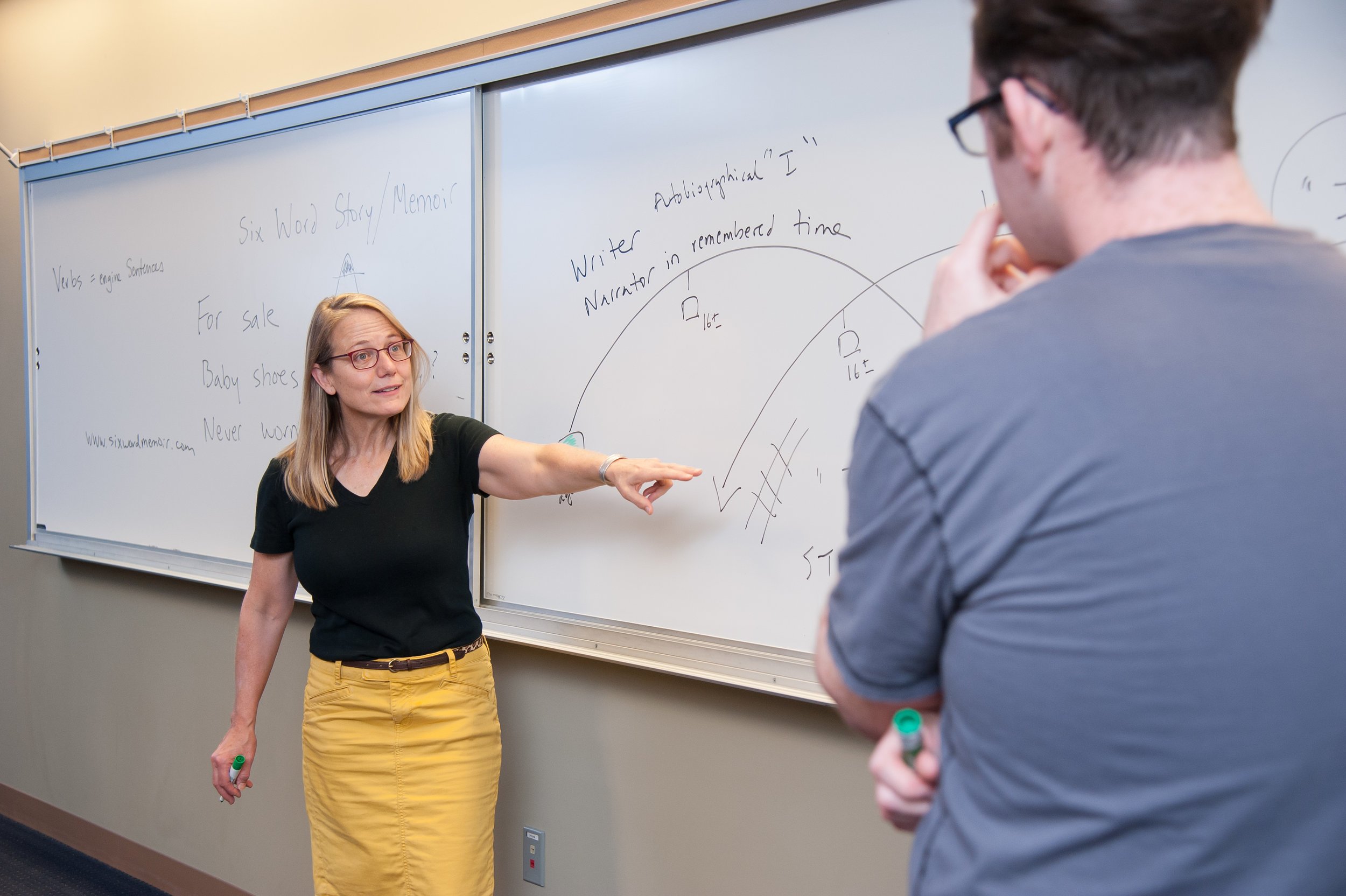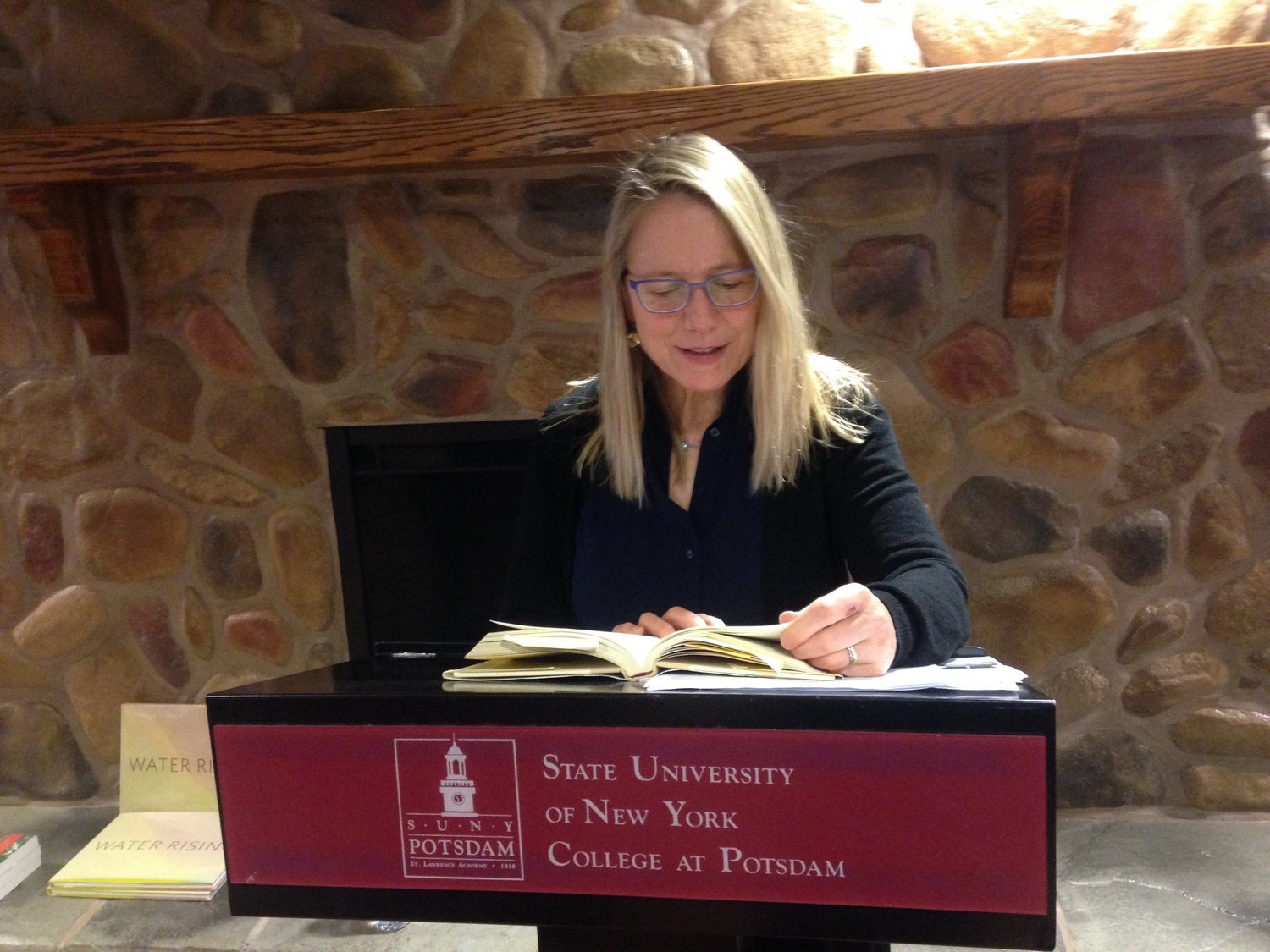Leila Philip
Professor, English Department
College of the Holy Cross
Environmental Studies Program
Creative Writing Program
Why I teach





“Life cascades into the classroom, as it should. Discomfort is an essential part of the learning process. Each semester I work hard to devise new ways to make students slow down, to suspend judgment, to sustain focus — in other words, to prevail in the face of discomfort, not to avoid it. ”
Opinion essay in The Boston Globe, August 10, 2016
As I drive up the tree-lined entrance to the college where I teach, I’m thinking about the list I wrote in May, when summer was going to last forever and I was sure I could finish my new book, even sort the boxes of papers from our move 12 years ago. My August migration back to campus always involves a stage of grieving. I pass the clock tower and, in a fit of delusional thinking, tell myself I still have time — 30 days until classes begin.
My office door opens with a click and there they are on the table, the stack of books I plan to teach this fall in my two sections of Introduction to Creative Writing, along with a folder of notes about ideas for new readings and writing exercises. My goal is for students to experience the class assignments as spontaneous, in order to break down their inhibitions toward writing, but creating this sense of surprise requires careful planning. I have a long list of things I have to do now, which is why I’m in my office with a heavy heart in early August.
-
As soon as I start working through my notes on the upcoming syllabus, my mood lifts and I remember why I love teaching. Often students come into my class unable to write the first simple assignments, but by the end of the semester they leave amazed at what they have produced. Helping students discover their voice on the page is both exciting and humbling. This kind of learning experience can be transformative for students, and it would not be possible if I had to worry about mandated trigger warnings designed to shield students from facing uncomfortable feelings in the classroom. Fortunately, my college has no policy mandating their use.
I am thinking about a profoundly moving classroom moment last spring when two students read their work aloud. One had written a scene of playing basketball with his father as a kid, while his father was dying of cancer. The other student wrote about first hearing her mother tell her about her family’s flight from Cambodia through the killing fields of Pol Pot. The discussion that followed both of these pieces of writing was electric with intellectual and emotional engagement.
Life cascades into the classroom, as it should. Discomfort is an essential part of the learning process. Each semester I work hard to devise new ways to make students slow down, to suspend judgment, to sustain focus — in other words, to prevail in the face of discomfort, not to avoid it.
The rate of mental illness among college students is a concern. According to a 2015 American College Health Association survey, 58 percent of college students said they felt “overwhelming anxiety” in the past 12 months. That’s up more than 49 percent since 2009. I am increasingly alert as a teacher for signs of distress — a missed class, unanswered e-mails, failure to complete work — and I don’t hesitate to take action. But the most basic tenets of psychology emphasize that enabling people with anxiety disorders to avoid the things they fear is unhelpful. My students are not frail; they write stories that tell themselves and the world who they are and who they want to be. In the process, they affirm their strength and humanity.
I have worked with students who have chosen to write about racial profiling and racism, suicide, violence, loss, sexism, rape, and homophobia. These topics come up, and when they do, they require my full attention and engagement to navigate successfully. Perhaps sometimes I fail at this, but I always try, and by doing so I model for students the importance of listening and tolerance, dialogue and critical thinking. Trigger warnings seem to be designed to do the opposite, silencing hard discussions about things that matter.
As soon as I slip back out of my office, I’m once again enveloped in August sun, those precious remaining days of summer. But I no longer dread the start of the semester; I’ve been reminded of why I teach in the first place.
Courses
Interdisciplinary Courses in Writing, Visual Arts & Environmental Studies Created at Holy Cross
Time Capsule for Climate Change
Interdisciplinary Courses created for Holy Cross
Reading Nature
Opposites Attract: Writing Science
Ekphrasis: Writing from Art
Narrative Visions (Visual Arts)
Land, Spirit, Pilgrimage (Religious Studies)
Other Courses Developed for the English Department
Asian-American Literature
Reality Hunger?: Studies in Literary Nonfiction
Creative Workshops at all Levels in:
Fiction
Nonfiction Narrative
Essay
Multi-genre: Poetry, Fiction, Nonfiction
Graduate Workshops & Writing Conferences
Stonecost Low residency MFA program (2008-2009)
Fairfield University Low residency MFA program (2010-2012)
Ashland University Low residency MFA program (2011-2017)
Courses Developed for Graduate Programs:
Environmental Narratives
Writing for The Public Sphere
Writing Memoir
Researching Family Stories, Telling Family Histories
Ekphrastic Writing
The Speculative Essay
Travel Writing



